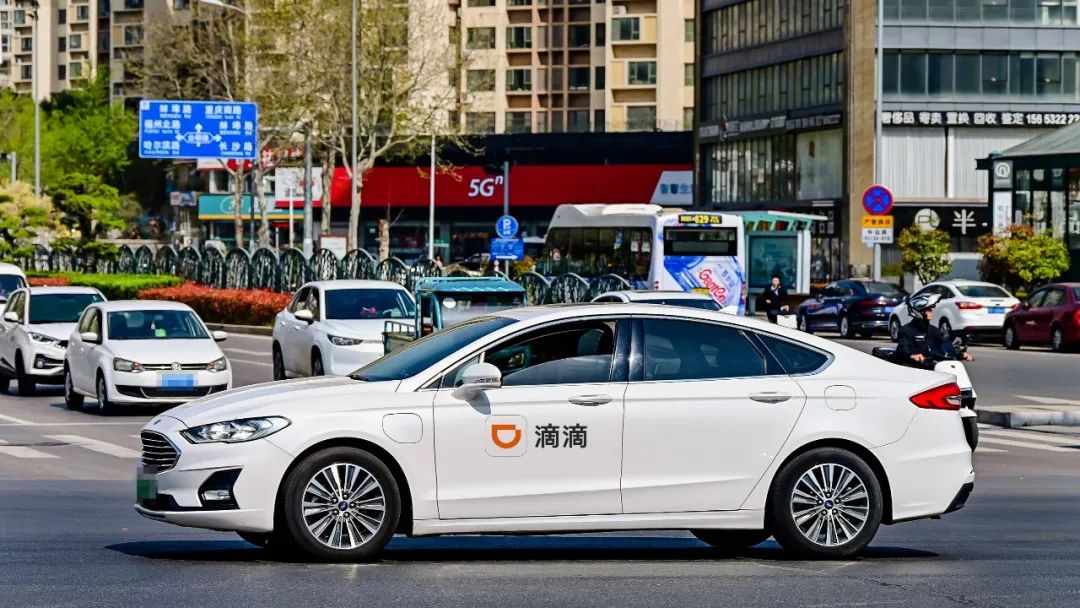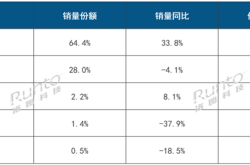Navigating the Future: Gaode Maps Faces Alibaba Integration Challenges, While Didi Chuxing Explores New Horizons
![]() 06/23 2025
06/23 2025
![]() 686
686

Once a quiet background player on mobile phones, Gaode Maps has blossomed into a colossus.
According to the latest QuestMobile data, in March 2025, Gaode Maps topped the list of top 10 travel service apps by total traffic, followed by Baidu Maps and Didi Chuxing, with Tencent Maps trailing significantly. Earlier this year, during an earnings call, Alibaba Group executives announced that Gaode Maps had achieved profitability for the first time.
Profitability has long been a challenge for map platforms. Even Google Maps, with over 1 billion monthly active users (MAU) and consistently ranking among the top downloaded apps globally, generates annual revenue of around $9.7 billion, accounting for only about 5% of its parent company's total revenue. The head of Google Maps once admitted that despite over 15 years of operation, the department's "commercialization is still at a fairly primary stage."
Gaode Maps faces a similar situation.
Maintaining real-time updates of high-precision map data, a vast road network, and continually optimizing navigation algorithms are costly investments. Marketing and promotional expenses also remain high. While commissions from ride-hailing services and access to various O2O services support operations, both advertising and the ride-hailing aggregation model are showing signs of sluggish growth, making it difficult for Gaode to achieve further breakthroughs in the short term.
Notably, the capital accumulated by Gaode over the years in the "background" is its huge user base and data traffic. Although its commercial potential was not fully tapped in the past, in recent years, as its business boundaries have been continuously explored and expanded, Gaode is attempting to embed its reach deeper into users' daily life scenarios.
In contrast, Didi has fortified its domestic ride-hailing base with a strong market share.
Overseas, Didi's international business has seen a GTV growth rate of nearly 28%, with losses narrowing to 180 million. The narrative space for upward growth is opening up.
As second-tier platforms like Ruqi and Caocao Chuxing begin to explore capital stories beyond ride-hailing, Gaode, with the fourth-highest monthly active users, and Didi, with a 70% market share, are also seeking answers regarding independence and new beginnings.
01. Monetization: A Long-Distance Race
According to the QuestMobile report, as of March 2025, Gaode Maps had 873 million monthly active users, solidifying its position as the fourth pole of China's mobile internet – behind WeChat, Taobao, and Alipay.
Such a vast traffic pool should logically be fertile ground for commercialization, but the tool attribute of map navigation means that its value realization requires a longer period.
The dynamic updating of 3D real-world maps, algorithm optimization for BeiDou centimeter-level positioning, and real-time rendering of lane-level navigation nationwide – all these technical barriers require sustained investment in capital and time. Even with support from the Alibaba ecosystem, Gaode has long been mired in losses. At the end of 2024, its local lifestyle group announced its first profitability, but adjusted EBITA (earnings before interest, taxes, depreciation, and amortization) still recorded a loss, indicating that the foundation for profitability has not yet been solidified.
When a tool encounters ecological challenges, Gaode's breakthrough trajectory is similar to that of WeChat Mini Programs in their early days – the latter did not rush to monetize but first established a closed payment loop, then gradually unleashed commercial potential through advertising and content payment.
Gaode's solution is to transition to an "Outdoor Lifestyle" platform: In 2021, after Alibaba's organizational restructuring and integration of the lifestyle services sector, Yu Yongfu proclaimed the slogan "Outdoor Living with Gaode"; in 2023, Koubei business was integrated, and "Gaode Instant Delivery" was launched to test the waters of immediate delivery. However, shifting user perception is far more difficult than adding functions. Users' willingness to click on group-buying coupons on the map page still pales in comparison to the instinctive reaction to search for "nearby food" on Meituan; in August 2024, commercial licensing fees were introduced, with the platform initiating tiered pricing, and technology licensing officially becoming a cash flow channel.
It is reported that Gaode Maps' open platform offers two commercial service plans: Basic and Premium. The price for Premium services is 100,000, double that of the Basic version.

In exploring ride-hailing aggregation and the driver ecosystem, in previous years, Gaode demonstrated strong growth in driver and user engagement through precise subsidy strategies and diversified services. By optimizing its driver-side services, Gaode gradually achieved a breakthrough in profitability. In 2024, Gaode's average daily order volume reached 8 million. According to LatePost, in September 2022, Gaode's aggregated ride-hailing business became profitable after the average daily order volume reached 5.5 to 6 million.
QuestMobile data from February 2025 shows that Gaode Maps' next-cycle loyal conversion rates for wandering users of Baidu Maps and Tencent Maps were 10.7% and 38.6%, respectively. Through functions such as "Real-time Traffic Updates + Exclusive Driver Mode" and "Fuel Consumption Statistics," Gaode converts information traffic into its own operational data. "Minimal operations, maximum online time," and "precise subsidies during high-frequency intervals and order-taking periods." These measures have also improved driver-side activity and conversion in the short term.
Looking back at Gaode's monetization strategy now, one can find parallels in the cross-border layouts of many other companies. For example, even though WeChat had massive social traffic in its early days, it did not immediately monetize all its services. Instead, it went through multiple iterations, first establishing a payment system, then launching mini-programs, an advertising ecosystem, content payment, etc., until it formed a diversified and mutually beneficial commercial closed loop.
The core of this lies in continuous trial and error, decisive increases at critical nodes, and gradually amplifying monetization capabilities after accumulating user stickiness and ecological value.
Therefore, if Gaode relies solely on traffic distribution and short-term subsidies, it will be difficult to escape the fate of the "valuation ceiling for tool-type applications." It needs to prove its ability to turn the behavioral data of 800 million users into an AI engine that predicts consumption intentions, such as automatically packaging the "optimal solution for travel and lifestyle" of parking spots, restaurant reservations, and cinema packages before users navigate to a business district.
This transformation requires not a blitzkrieg but a marathon that spans technology, ecology, and user perception.
02. The Chess Game of Ecological Integration and Independence
On Alibaba's strategic map, Gaode's position carries a subtle tension – possessing the traffic volume of China's fourth-largest app but not yet fully able to shake off its role as an ecological supporting actor.
Financial data reveals the complexity of this relationship. In fiscal year 2025, Alibaba's local lifestyle group generated revenue of approximately 67.076 billion yuan, a year-on-year increase of 12%. The earnings report explicitly mentioned that the growth was mainly driven by increased order volumes and marketing service revenue from Gaode and Ele.me. Securities firms have analyzed that Gaode's current state can be described as "meager profits," while Ele.me, constrained by continuous competition in food delivery, remains the primary source of losses for this sector.
Interestingly, this improvement in profitability has not significantly translated into strategic autonomy for Gaode within the group. When users search for restaurants on Gaode, the results page displays both Douyin's group-buying links and Ele.me's direct buttons. Gaode thus functions more like a carefully designed traffic channel rather than an independent lifestyle service platform. This "entrance-priority" positioning may, in the long run, restrict its ability to establish a complete service closed loop.
Currently, the domestic competitive landscape is becoming unprecedentedly complex. Platforms such as Douyin, Meituan, and Kuaishou are cutting into critical user decision-making points: Douyin deeply integrates group buying into its map search function, attempting to intercept consumer intentions; Meituan relies on its robust ground promotion network to establish deep ties with merchants; Kuaishou is quietly testing a "map-based food ordering" function in some cities...
To consolidate Gaode's entrance position, Alibaba continuously strengthens its integration with Ele.me (e.g., one-click jump to food delivery). While this ecological collaboration helps combat external competition, it also inadvertently defines the boundaries of Gaode's development.
Moreover, Gaode's overseas exploration faces similar ecological constraints. The three-year cooperation agreement signed with Alibaba Japan in May 2025 ostensibly aims to jointly develop the East Asian market but in reality requires compliance with the group's overall deployment – with Alibaba Japan leading the development of AI agents, Gaode's role is more inclined towards technical collaboration.
This contrasts somewhat with Didi's internationalization path: Didi has deeply cultivated markets in Latin America through self-built transportation networks. In the first quarter of 2025, its overseas orders increased by 24.9% year-on-year, with an average daily order volume exceeding 10.99 million. Its international travel business adjusted EBITA achieved profitability for the first time.
In contrast, Gaode, limited by Yahoo Maps' dominant position in the Japanese market and stringent data compliance requirements, struggles to replicate Didi's expansion efforts in establishing a complete service ecosystem in 14 countries such as Brazil and Mexico.
Comparatively, after going through delisting controversies and subsidy wars, Didi has at least seemingly absorbed the costs of its mistakes on the surface.
According to LatePost, in 2024, subsidies to drivers and passengers across the platform accounted for approximately 14% of revenue, with Didi's total annual subsidies amounting to approximately 26.6 billion yuan, which is generally consistent with the industry's common strategy to maintain user stickiness.

Therefore, when Didi's domestic ride-hailing gross transaction value (GTV) growth flattens, we can see that while stabilizing its domestic ride-hailing base, its overseas business continues to reduce losses. Using its success in the Latin American market as a springboard, Didi recently relaunched its food delivery business "99 Food" in Brazil, attempting to replicate the synergistic model that has achieved over 50% market share in Mexican food delivery.
From Didi's first-quarter financial report, its total business and revenue growth are around 10%. Currently, given the broader context, maintaining the status quo as much as possible until overseas business can truly contribute incremental profits is perhaps something Didi is happy to see.
Within the Alibaba ecosystem, the closer the collaboration between Gaode and Ele.me, the more difficult it becomes for Gaode to break through its positioning as "group infrastructure." This game is far from over. Gaode needs to find a balance between ecological collaboration and independent development, while Didi must prove that overseas success can effectively offset cyclical fluctuations in the domestic market.
03. Conclusion
Looking back at Alibaba's positioning of Gaode, it boils down to "traffic first, platform Nth." At present, only by maintaining ecological collaboration while regaining more control over merchant, data, and product strategies, and substantially enhancing service capabilities beyond being an "entrance," can Gaode truly grow from the second engine of the Alibaba ecosystem into an independent local lifestyle platform amidst fierce competition and a complex international environment.
Otherwise, no matter how large the traffic volume, Gaode will continue to play an important but passive role in the Alibaba ecosystem.
Objectively speaking, however, Gaode Maps has gradually explored a transformation path from a "navigation tool" to a "lifestyle service platform" within the Alibaba ecosystem. By gradually expanding revenue sources, deepening the platform ecology, and enhancing user stickiness, Gaode has begun to occupy a place in the local lifestyle and travel service markets.
On the other hand, Gaode's independent brand image in overseas markets still needs to be strengthened. When selecting partners or acquisition targets, it should listen more to local teams and grant greater autonomy to local business units. This is not to deny the importance of ecological collaboration but to strive for more permissions for Gaode to conduct independent experiments and localized adjustments within the framework of "one Alibaba ecosystem."
In the future, Gaode needs to maintain its traffic advantage while breaking through the bottlenecks of platform independence and profitability models. For Didi, in the current environment, there is unlikely to be a logic of product structure upgrades leading to higher customer unit prices. Given that it cannot tell a domestic growth story, seeking new opportunities overseas is undoubtedly a cost-effective decision.
*The lead image and images in the article are sourced from the internet.








